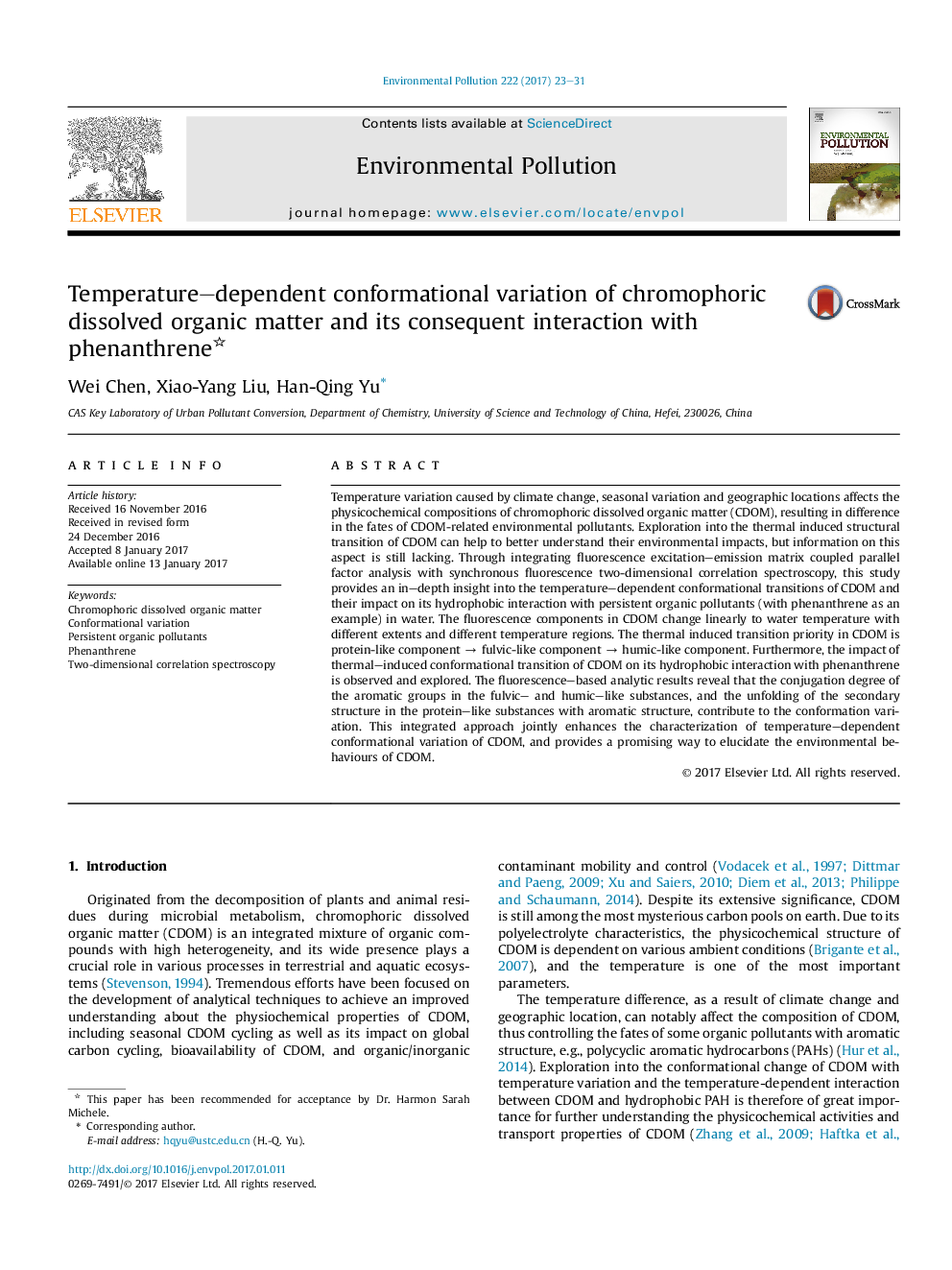| کد مقاله | کد نشریه | سال انتشار | مقاله انگلیسی | نسخه تمام متن |
|---|---|---|---|---|
| 5748990 | 1619151 | 2017 | 9 صفحه PDF | دانلود رایگان |
- Thermal-induced structural transition of CDOM was explored.
- EEM-PARAFAC and 2DCOS analysis jointly characterized the transition process.
- Temperature-dependent hydrophobic interaction of CDOM with PAH was demonstrated.
- The integrated approach can help to elucidate the environmental behaviours of CDOM.
Temperature variation caused by climate change, seasonal variation and geographic locations affects the physicochemical compositions of chromophoric dissolved organic matter (CDOM), resulting in difference in the fates of CDOM-related environmental pollutants. Exploration into the thermal induced structural transition of CDOM can help to better understand their environmental impacts, but information on this aspect is still lacking. Through integrating fluorescence excitation-emission matrix coupled parallel factor analysis with synchronous fluorescence two-dimensional correlation spectroscopy, this study provides an in-depth insight into the temperature-dependent conformational transitions of CDOM and their impact on its hydrophobic interaction with persistent organic pollutants (with phenanthrene as an example) in water. The fluorescence components in CDOM change linearly to water temperature with different extents and different temperature regions. The thermal induced transition priority in CDOM is protein-like component â fulvic-like component â humic-like component. Furthermore, the impact of thermal-induced conformational transition of CDOM on its hydrophobic interaction with phenanthrene is observed and explored. The fluorescence-based analytic results reveal that the conjugation degree of the aromatic groups in the fulvic- and humic-like substances, and the unfolding of the secondary structure in the protein-like substances with aromatic structure, contribute to the conformation variation. This integrated approach jointly enhances the characterization of temperature-dependent conformational variation of CDOM, and provides a promising way to elucidate the environmental behaviours of CDOM.
250
Journal: Environmental Pollution - Volume 222, March 2017, Pages 23-31
